When people think of the Caucasus, they probably have countries like Georgia or Armenia in mind and cities like Tbilisi or Yerevan. But the largest city in the Caucasus is often forgotten. Baku, with its 2.3 million inhabitants, has become a real highlight since the collapse of the Soviet Union. The government of Azerbaijan has also invested parts of its revenues from the oil and gas industry into creating many things to do in Baku. The skyscrapers and spruced-up streets bear witness to this.
Since 2000, the Old City of Baku has also been a UNESCO World Heritage Site. With its mix of medieval caravanserais and the impressive old town, the heritage of the Russian empire, many buildings and monuments from the Soviet era, and the modern skyscrapers and spruced-up promenades, Baku and its sights are surprisingly different. Reason enough why we would like to introduce you to the city a little more closely.

Baku Old Town (İçəri Şəhər)
The Old City of Baku is one of the best preserved medieval cities in the Caucasus. Large parts of the historic walls were built as early as the 12th century. Until well into the 19th century, the walls were reinforced again and again. Even today, large parts of the fortifications are still in place. In the old town there are several of the most famous Baku sights.
Besides the palaces, mausoleums and museums of the city, two Zoroastrian fire temples are particularly interesting. They were built in the 17th century for the followers of this religion, of which today there are only a few hundred thousand adherents worldwide. You can also see medieval madrasas and caravanserais, which were used as stopping points on the trade routes to the Orient.

Muhammad Mosque (Məhəmməd məscidi)
The Old City is also home to the oldest mosque in Azerbaijan, the Muhammad Mosque with the Synyk-kala minaret. It was built in the years 1078 to 1079 after the first Muslims came to Baku. The Synyk-kala minaret is considered one of the landmarks of Baku and looks like a slender castle tower. In fact, the minaret is also said to have been used as a defense tower in the old city and is therefore comparatively unadorned. The minaret is also famous because during the Russo-Persian War, while the city was under siege, a Russian warship fired on the city and is said to have hit the minaret. Shortly after, a strong wind started, driving the ships further out to sea. The Baku people interpret this as a sign of God’s wrath for damaging the minaret.
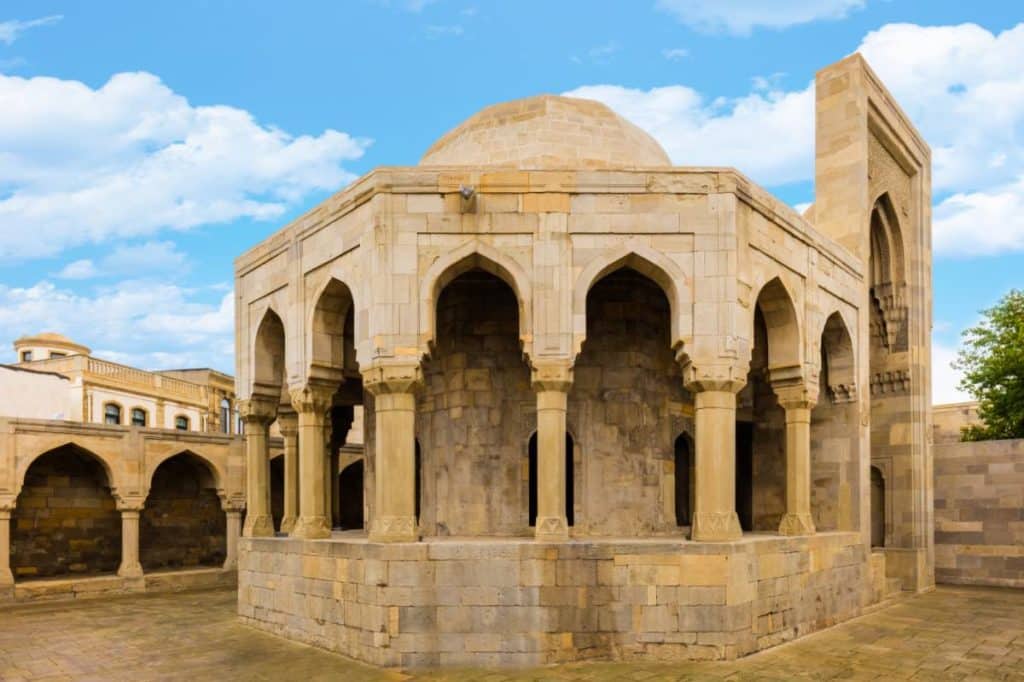
Palace of the Shirvanshahs (Şirvanşahlar sarayı)
The Shirvanshahs were a Muslim dynasty that ruled large parts of present-day Azerbaijan in the Middle Ages. They made Baku the capital of their empire and therefore also built a large palace here. The buildings of the palace include the mausoleum of the Shirvanshahs, where the most important rulers are buried. The most impressive building is the Divan Khana, which served as a meeting place. The residential palace also testifies to the life at the court of that time. Also, the remains of the former bathhouses are still here.

Maiden Tower (Qız Qalası)
Once it was part of the city walls of Baku and, along with the Flame Towers, is considered one of the most famous things to see in Baku. It even adorns banknotes. The Maiden Tower is not particularly high, at just under 30 meters, but the walls on the first floor are almost five meters thick. It is probably one of the oldest buildings in the city and is even said to have once stood directly on the Caspian Sea. Some scholars suggest that it too was once a fire tower of the Zoroastrians. Its foundations probably date back to the 5th century. In the tower there is its own well, which supplied water to the defenders of Baku. You can also find a museum about the history of Baku here.

Azerbaijan Carpet Museum Baku (Azərbaycan Milli Xalça Muzeyi)
Besides the palaces, mausoleums and museums of the city, two Zoroastrian fire temples are particularly interesting. They were built in the 17th century for the followers of this religion, of which today there are only a few hundred thousand adherents worldwide. You can also see medieval madrasas and caravanserais, which were used as stopping points on the trade routes to the Orient.
Also exhibited are the so-called garden carpets or carpet gardens, in the middle of which are depicted ponds, trees, watercourses, flowerbeds and swans. This art was developed in Persia at the beginning of the 6th century. The most imposing example was a 600-square-meter legendary carpet called “The Spring of Khosrau”, which was intended to make the winter months more bearable for the then Persian Great King Khosrau.
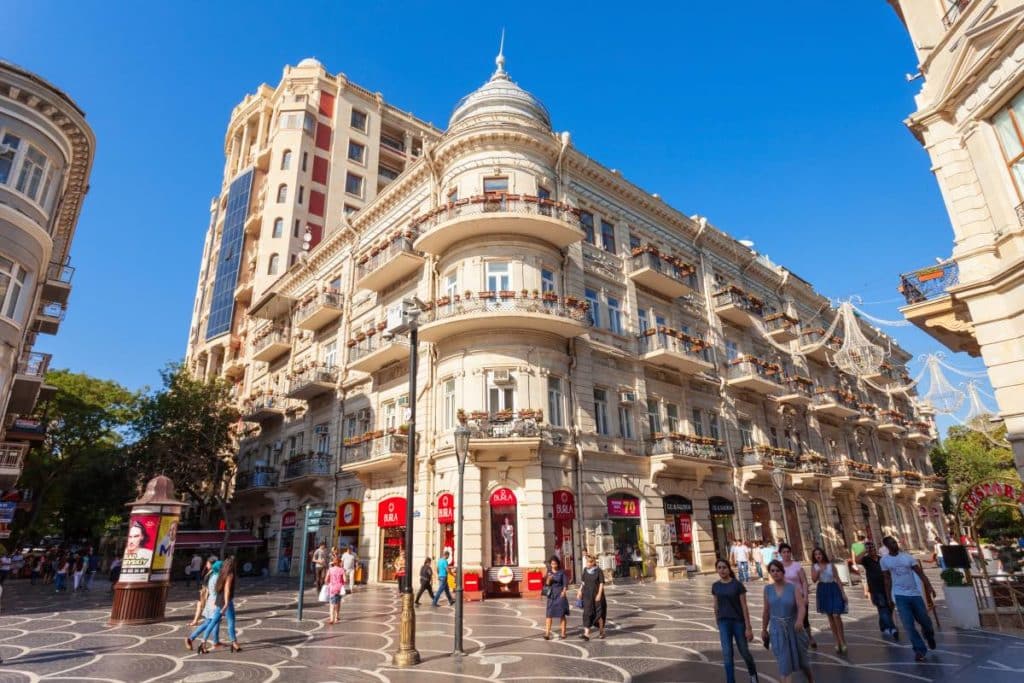
Nizami Street (Nizami küçəsi)
Named after the Persian poet Nizami Ganjavi, who was born in Ganja in today’s Azerbaijan, the street is the promenade of Baku. It is one of the most expensive streets in the world, because here you can find several stores of expensive brands. The architecture of the street also reflects the history of Azerbaijan, from the Russian rule in the mid-19th century and the rise of Baku as an oil and gas producing city with its magnificent neo-Renaissance buildings and other styles. However, Stalin’s magnificent buildings and important cultural institutions can also be found here.
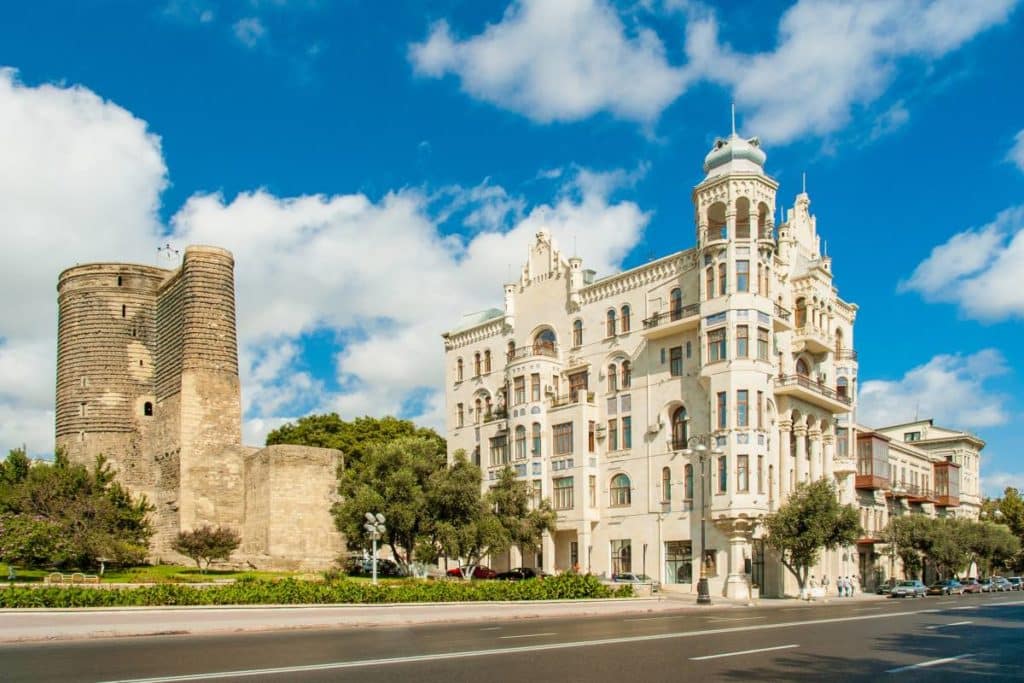
Hajinski Mansion (Hacınskinin evi)
Isa Bey Hacınski was one of the most influential and wealthy citizens of Baku, who profited considerably from the oil boom and therefore had a magnificent house built in the city. It is said to have been built in just three months, allegedly out of a bet with another oil magnate from Baku. Later, French General and later President Charles de Gaulle also stayed here on his way to the Tehran Conference in 1944.
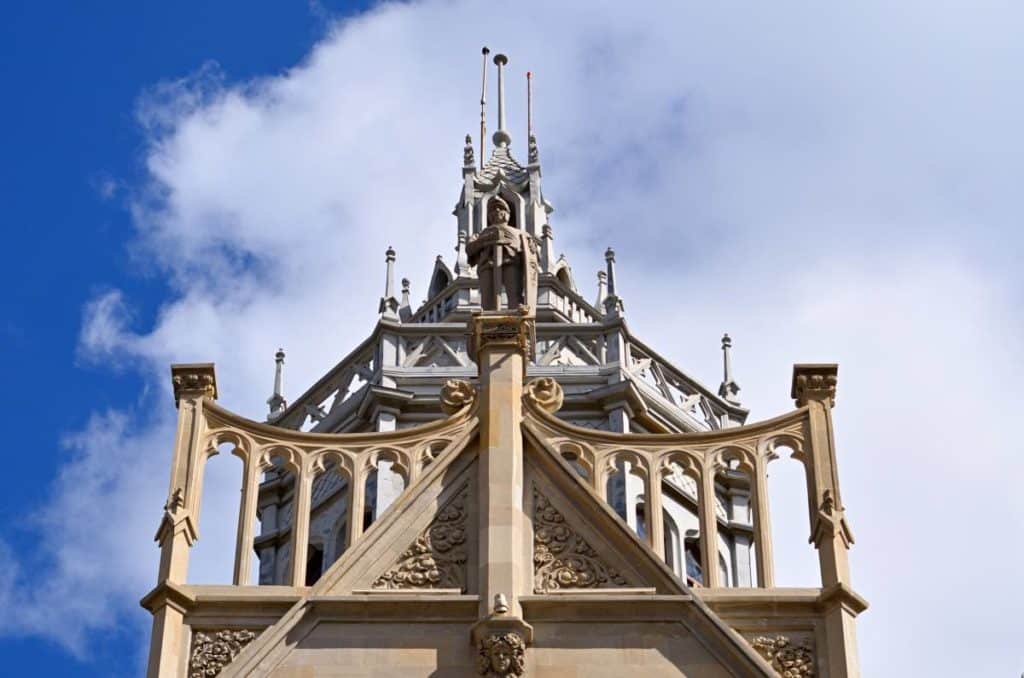
Palace of Happiness (Səadət Sarayı)
Another building on our list of the best Baku sights also originates from the idea and the wallet of an oil magnate from Baku. The Palace of Happiness was built by oil baron Murtuza Mukhtarov for his wife Lisa. The architect of the spectacular neo-Gothic building was the Pole Józef Płoszko. After the Bolsheviks conquered the city, Mukhtarov shot three of the Red Army soldiers who tried to seize his house and then took his own life. During the Soviet Union, the building functioned as a registry office and was successively renovated in the years after independence.
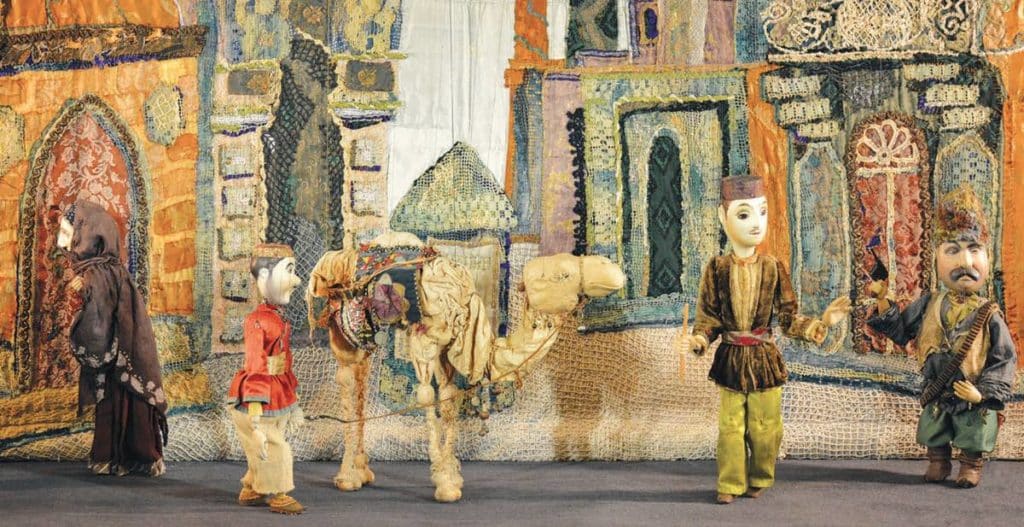
Marionette Theater (Bakı Marionet Teatrı)
With lovingly designed costumes and stage sets, the Baku Puppet Theater (Muslim Magomayev Street 20) is a real experience. Founded by Tarlan Gorchu in 1980, during the Soviet era, the institution also presents fairly new plays that transport visitors directly into the mystique and atmosphere of the Orient. One of the most popular plays is Uzeyir Hajibeyli’s opera Leyli & Majnun, a love story that is a kind of oriental Romeo and Juliet. The puppet theater, by the way, is not to be confused with the state puppet theater that also exists.
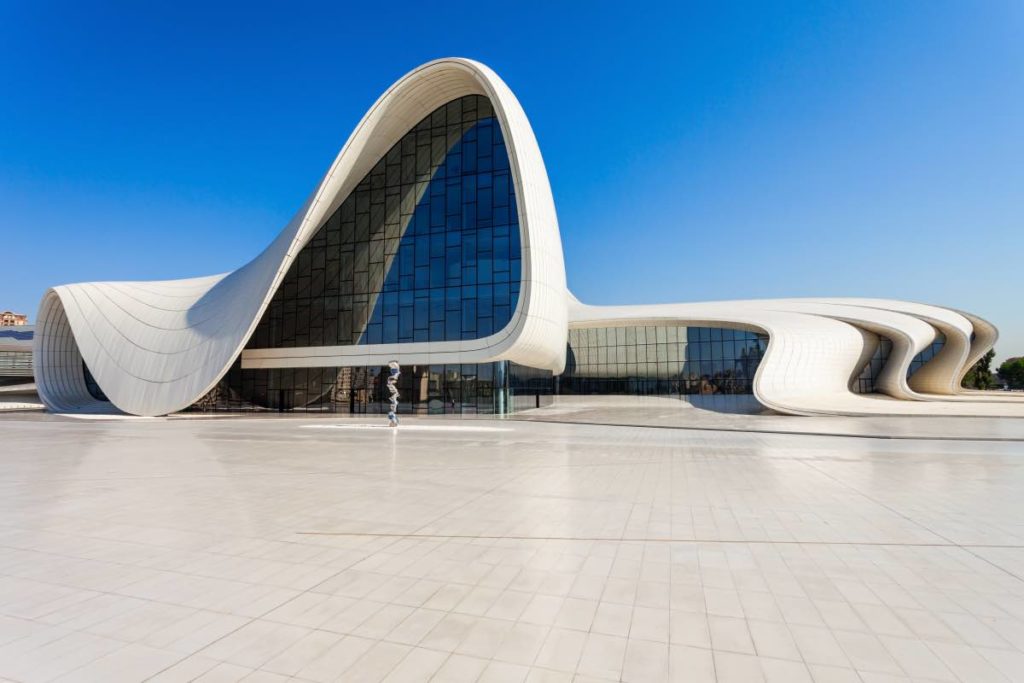
Heydar Aliyev Center
It is somewhat reminiscent of the Sydney Opera House. The Heydar Aliyev Center is an exhibition center in Baku, designed by Zaha Hadid, which offers a variety of exhibitions. In the huge white building you will find, among other things, the permanent exhibition “Mini-Azerbaijan” on 60,000m². Here you can see 50 lovingly recreated miniature buildings from all over the country on a scale of 1:33. The Aliyev Center is one of the country’s most important cultural centers and was named after Azerbaijan’s former president.

Flame Towers (Alov qüllələri)
Meanwhile, the Flamer Towers have become a symbol of the emerging city of Baku and Azerbaijan’s new prosperity. They were opened in 2013 and of course represent a flame, after all Azerbaijan is also considered the land of fire. The three towers are just under 182, 165 and 161 meters high, respectively, and flare like real flames. When the Eurovision Song Contest stopped off in Baku in 2012, the Flame Towers were frequently used to promote the city.
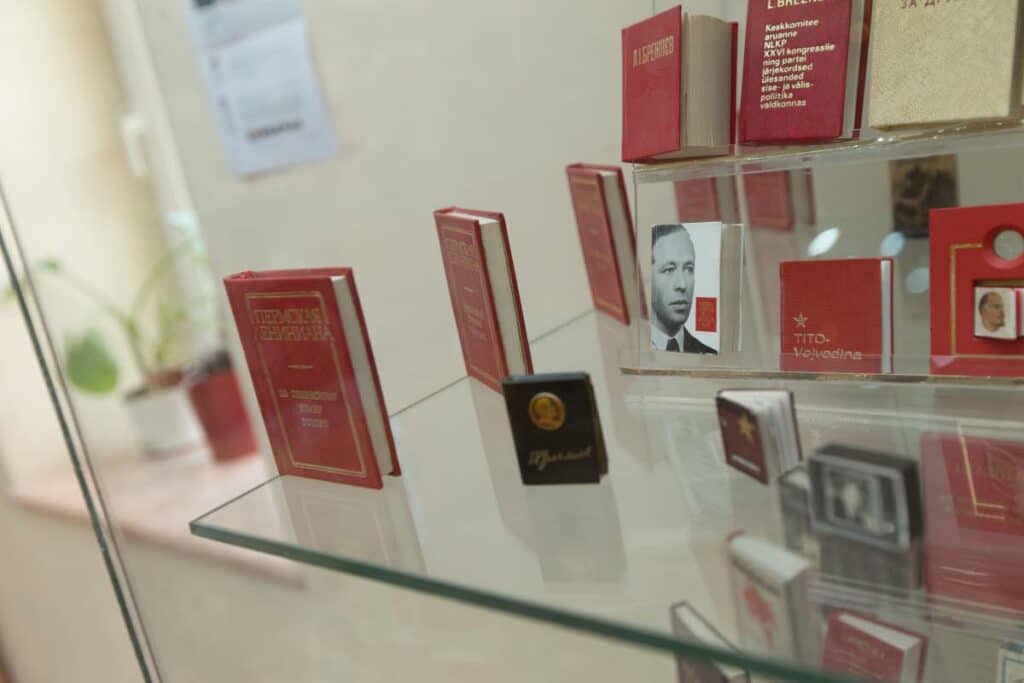
Miniature Book Museum (Miniatür Kitab Muzeyi)
You will need glasses at least, but even then you will only be able to read a few of the works in the Miniature Book Museum Baku. Collector Zarifa Salahova has gathered more than 7500 small books from 70 languages here. In the meantime, she has even surpassed the collection of the Miniature Book Museum in Horlivka in Ukraine, the only other museum of its kind in the world. In addition to Azeri, she also prints in Russian, English, German and even Vietnamese. Today, Salahavo even prints the miniature books herself in her own publishing house.
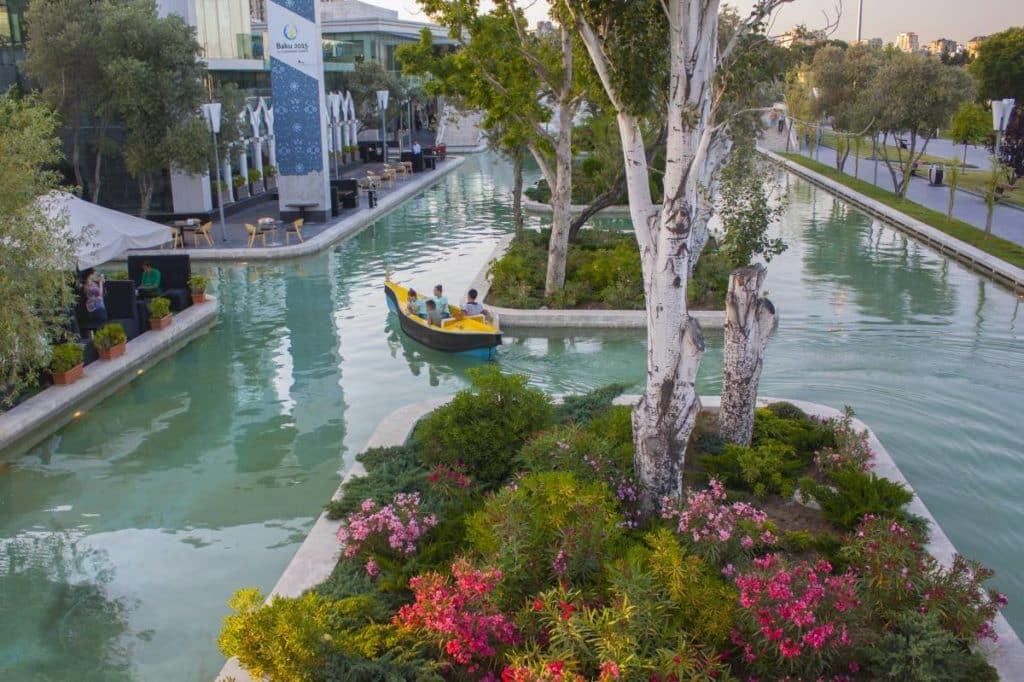
Little Venice (Kiçik Venesiya şəhərciyi)
The Chinese like to copy and sometimes build entire cities in the style of the originals. Azerbaijan is also good at this and began to build a copy of Venice in Soviet times. The gondolas and gondoliers are real, but they don’t push, they just steer, because the vehicles here have an electric drive. If riding the gondolas in Little Venice is too kitschy for you, you can simply stroll through the district. It is certainly pretty.
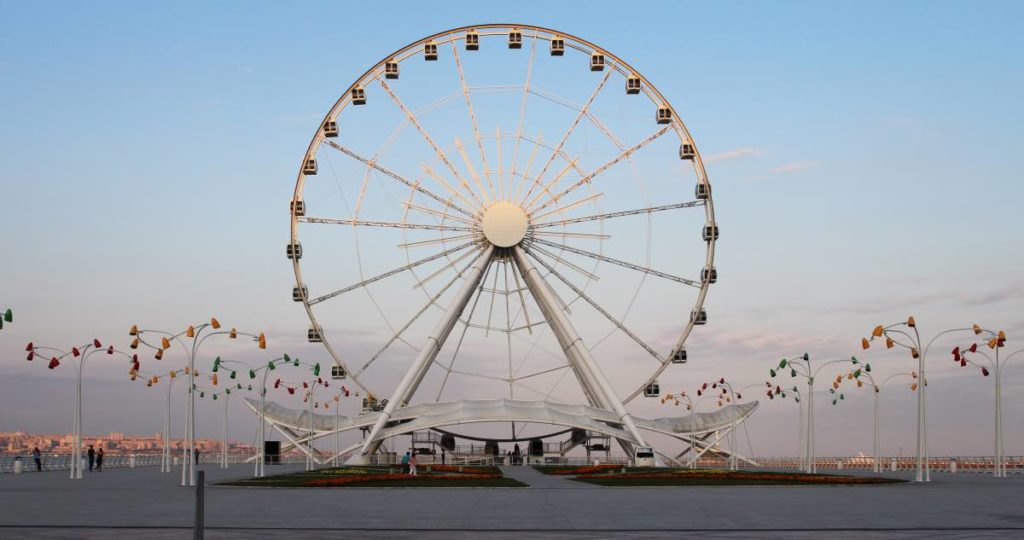
Ferris Wheel Baku Eye (Şeytan çarxı)
The 60-meter-high Baku Eye Ferris wheel stands directly on the waterfront promenade on the Caspian Sea. It was opened in 2014 by Azerbaijani President Ilham Aliyev. The 30 enclosed cabins take about half an hour in which you can enjoy the view over the city and the shore of the Bay of Baku.
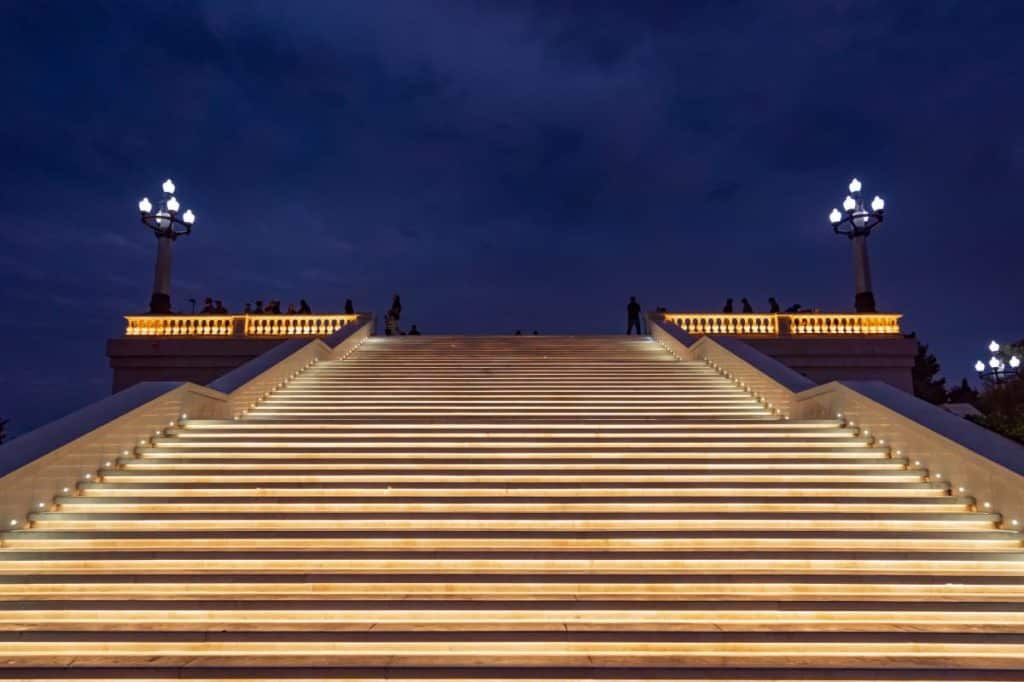
Highland Park (Dağüstü parkı)
Dağüstü Park is also a great place to stroll around. The park, which translates as Highland Park, is a real highlight of Baku with its LED lighting at night. The white marble staircase, which is perhaps a copy of the Potemkin staircase in Odesa, is almost too good to jog up. An absolute must is in any case the viewing platform in the park, from which Baku lies at your feet.
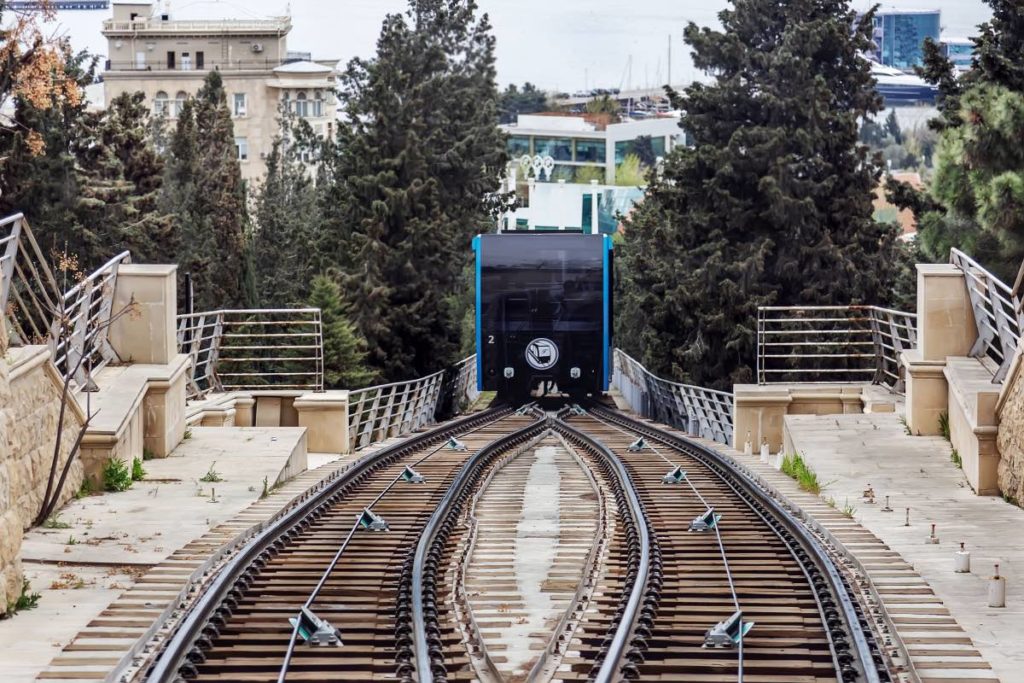
Baku Funicular
Azerbaijan’s only funicular railroad was built back in Soviet times and equipped with cars from Kharkiv. Since these were considered notoriously unreliable, the line was temporarily closed and extensively renovated. Since 2012, it now has new carriages and take you 90 meters higher on the one track. The train only moves at 2.5 meters per second, but that’s certainly still faster than you would manage on foot. You’ll be at the top of the mountain station in about four minutes.
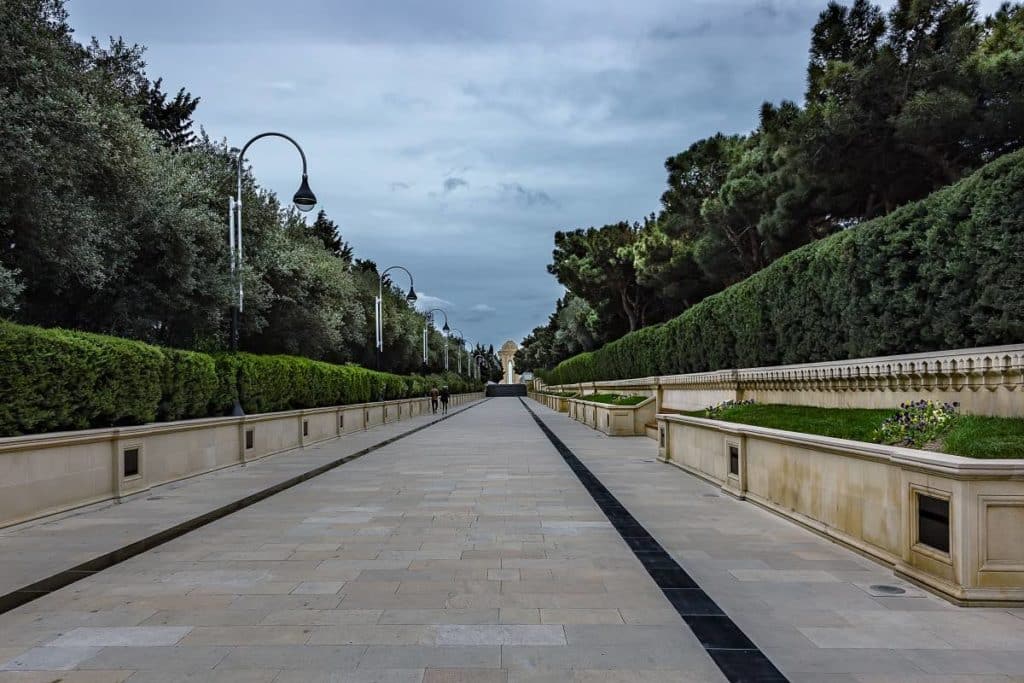
Martyrs’ Lane (Şəhidlər Xiyabanı)
At the end of the First World War, the Azeris fought bitterly for the independence of their country against Bolsheviks, Mensheviks and Armenians. Therefore, for a short time a cemetery for the fighters was built here. The struggle was ultimately unsuccessful and Azerbaijan became part of the newly formed Soviet Union. The graves were levelled and the Soviets built an amusement park on them. Only with independence the amusement park was closed and monument to Bolshevik Sergey Kirov was taken down.
The graves were restored and expanded to include those killed in the so-called Baku Black Friday, in which Soviet troops killed protesting Azerbaijanis. The order was given by Mikhail Gorbachev, who is blamed in Azerbaijan for the 147 dead and over 800 wounded. Fallen soldiers from the wars over Karabakh in the 1990s and 2020 are also buried here.

Heydar Mosque (Heydər məscidi)
A real ostentatious building, but well worth seeing, is the Heydar Mosque. It is the second largest mosque in the Caucasus after the one built by Chechen dictator and torturer Ramzan Kadyrov in Grozny. At the four corners of the mosque are 95-meter-high minarets, impressive for their height alone. At night it is strongly illuminated, so you should consider an evening trip to the suburb where the mosque is located. The ornaments that decorate the facade also testify to the truly impressive stonemasonry of the Azerbaijanis.
The White City (Ağ Şəhər)
Once home to some of the largest oil-processing plants in the Soviet Union, parts of the so-called Black City are now to become white. The White City is being built on the former site of the oil operations. The oil-contaminated soil was specially removed for this purpose. For this spectacular construction project, new apartments, cultural buildings and a waterfront promenade with renaturation will be created. They represent the largest construction project in the young history of the country, surpassing even the already quite ostentatious Heydar Mosque and the Flame Tower. After completion, 50,000 people are expected to live and work here.

Baku TV Tower (Bakı Televiziya Qülləsi)
However, the Flame Towers are far from being the tallest building in Azerbaijan. At 310 meters, the Baku TV Tower still towers over them by almost double. The tower was planned and started in Soviet times. However, construction was interrupted in the 1980s and resumed only after Azerbaijan’s independence. In 1996 it was completed after all. Today you can go to the observation deck at a height of 175 meters, which is several meters higher than the Flame Towers. In the revolving restaurant you can eat well and enjoy the view of the city.
Baku and Azerbaijan book tips
Azerbaijan is a country that is not well covered yet. But luckily there is at least a Lonely Planet which includes Armenia and Georgia as well. There are some good recommendations for the whole country and not just Baku.
- Johenning, Heike Maria (Author)
Understanding the culture of a country you are travelling in is essential in making quality contacts there. So the Culture Smart Azerbaijan will be a great help to understanding Azeri culture and meeting people with a good start.
- Heike Maria Johenning (Author)
If you are not ready to travel yet or simply prefer to cook through the cuisines of other countries, then this compendium of Azeri kitchen is gonna be your new best friend. Get to know all the great dishes and try them yourself.
- Holger Kretzschmar (Author)
Understanding the events of the late Soviet Union in Azerbaijan will make you better understand the thoughts of today’s Azerbaijanis. Therefore this book will be a thought-provoking help for you.
The classic of Azerbaijani literature, telling a love story on the eve of the Russian Revolution, with an impressive afterword by Nino Haratischwili.
- Said, Kurban (Author)
All images: Azerbaijan Tourism Board

